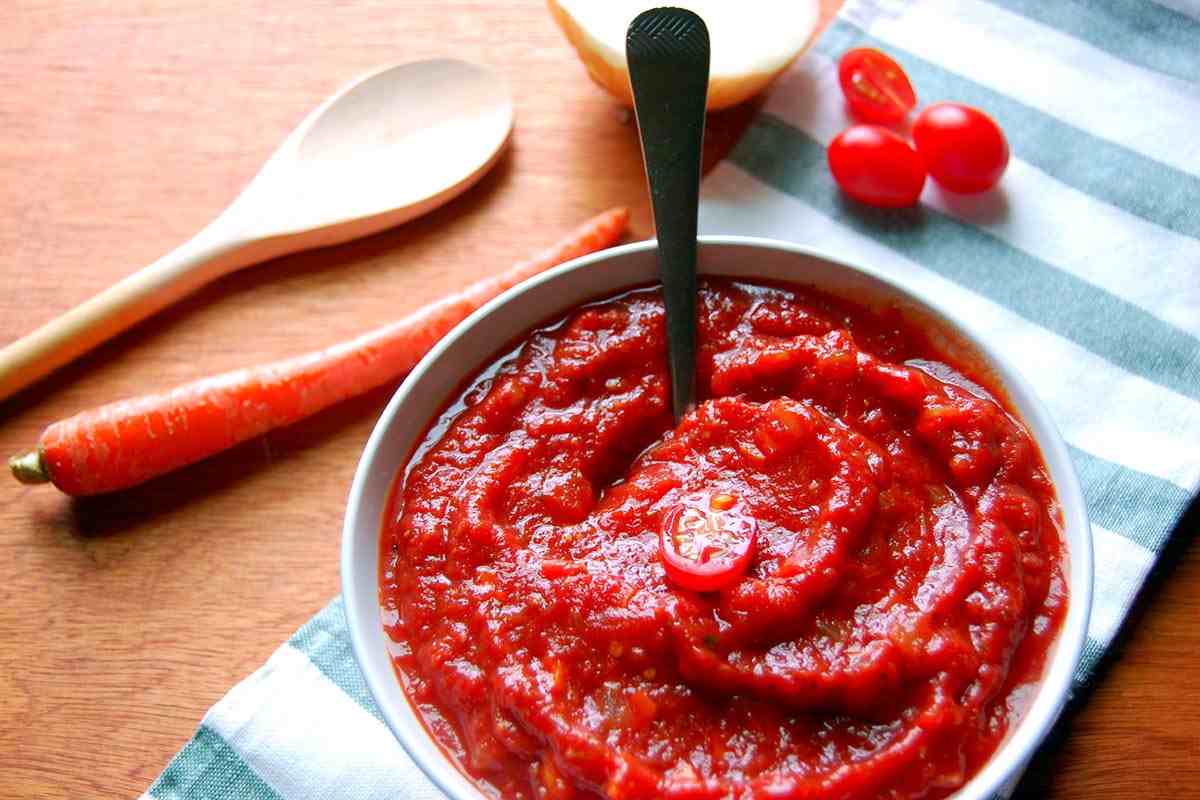The ways for determining the parameters for the quality of tomato paste in the process of production are here.
In-line evaluation of quality parameters, such as soluble solids content, titratable acidity, and Bostwick consistency of tomato pastes in continuous processing was examined using guided microwave spectrometry.
The spectrometer was put through its paces by performing two different types of processing: dilution and evaporation.
The final Bostwick consistency of the 34 tomato paste samples that were prepared ranged from 2 cm up to 11 cm. The samples were prepared by combining nine different types of tomato paste in varying quantities.
During the operation of processing, spectra of five separate samples were acquired at various soluble solids content levels that were reached.
At the same time, standard reference procedures were utilized to measure the parameters of interest on the same samples collected from the processing flow loop.

This was done simultaneously. The spectrum was recorded in 2 MHz increments from 136 MHz up to 2690 MHz.
The technique known as partial least square, or PLS, was utilized to generate prediction models for each quality feature using the amassed microwave spectra.
To verify the accuracy of the calibration models, cross-validation was carried out.
These models demonstrated good predictability of the soluble solids content, titratable acidity, and Bostwick consistency in both dilution and evaporation conditions, as shown by their high correlation coefficient (r) and low root mean square error of cross-validation (RMSECV) values.
This was the case because these models had low RMSECV values.
To optimize the models, interval partial least squares, abbreviated as iPLS, were used to pick the most informative and noise-free portions of the spectrum.
The iPLS models demonstrated an enhanced accuracy for the prediction of all three of the parameters, particularly for the Bostwick consistency (r > 0.92 and RMSECV 0.7 cm).
Based on these data, it appears that guided microwave spectroscopy was capable of providing an accurate evaluation of the soluble solids content, titratable acidity, and Bostwick consistency of tomato paste.
Because of the wide variety of processing circumstances, there was a need for a wide variety of prediction models to account for the changes in the dielectric characteristics of tomato pastes.
Utilizing guided microwave spectroscopy, a determination of the quality parameters of tomato paste was carried out.
Highlights
- Guided Microwave Spectroscopy (GMS), a type of spectroscopy, was utilized to evaluate the quality of tomato paste.
- The effectiveness of GMS was measured and analyzed under conditions of both dilution and evaporation.
- The GMS-PLS model revealed an excellent capacity to predict paste quality.
- The accuracy of the PLS models, particularly the model that accounts for consistency, was significantly enhanced by iPLS.
- The dielectric characteristics of tomato pastes are altered as a result of the processing activities.

Manufacturing of tomato paste:
Producing tomato paste at atmospheric pressure by an evaporation method utilizing a prototype described in Okut et al. (2018) allowed for the investigation of tomato paste’s reducing sugars, total sugars, HMF, and sensory qualities.
In addition, the ideal conditions for making strawberry jam in a vacuum cooker have been determined and applied to the Composite Rotatable Design.
We were aiming for the highest possible soluble solid content as well as sensory qualities when we established the ideal cooking temperature and time (consistency). The apparatus is capable of functioning under a diverse assortment of vacuum and temperature conditions.
It has four primary components: a vacuum evaporation vessel with a capacity of 6 liters, an electrical heater with a capacity of 1.5 kilowatts, an oily vacuum pump with a horsepower rating of 0.55, and a condenser with a capacity of 1 kilowatt that is charged with R-404a.
(Tomruk et al. 2016, and Okut et al. 2018) have already documented the construction and operating details of the equipment, testing its performance on strawberry jam production and comparing it to atmospheric cooking.
These details were reported after testing the equipment’s effectiveness.
This research was conducted with the goals of developing a prototype piece of cooking equipment that is capable of operating at a lower pressure and analyzing how well it performs when making strawberry jam.
The impact of cooking settings involving a vacuum on color soluble solid content, reducing sugars, total sugars, HMF, and sensory characteristics were studied.

In addition, the ideal conditions for making strawberry jam in a vacuum cooker have been determined and applied to the Composite Rotatable Design.
We were aiming for the highest possible soluble solid content as well as sensory qualities when we established the ideal cooking temperature and time (consistency).
According to the Central Composite Rotatable Design (CCRD), tomatoes were ground into a paste using a range of temperatures and processing periods (70, 80, 90, and 100 minutes), as well as varying amounts of vacuum and atmospheric pressure.
Table I contains the results of this experiment. To accomplish the process of atmospheric evaporation, the tomato paste was prepared in the same apparatus at a temperature of one hundred degrees Celsius but without the use of a vacuum. All of the water that evaporated.









Your comment submitted.